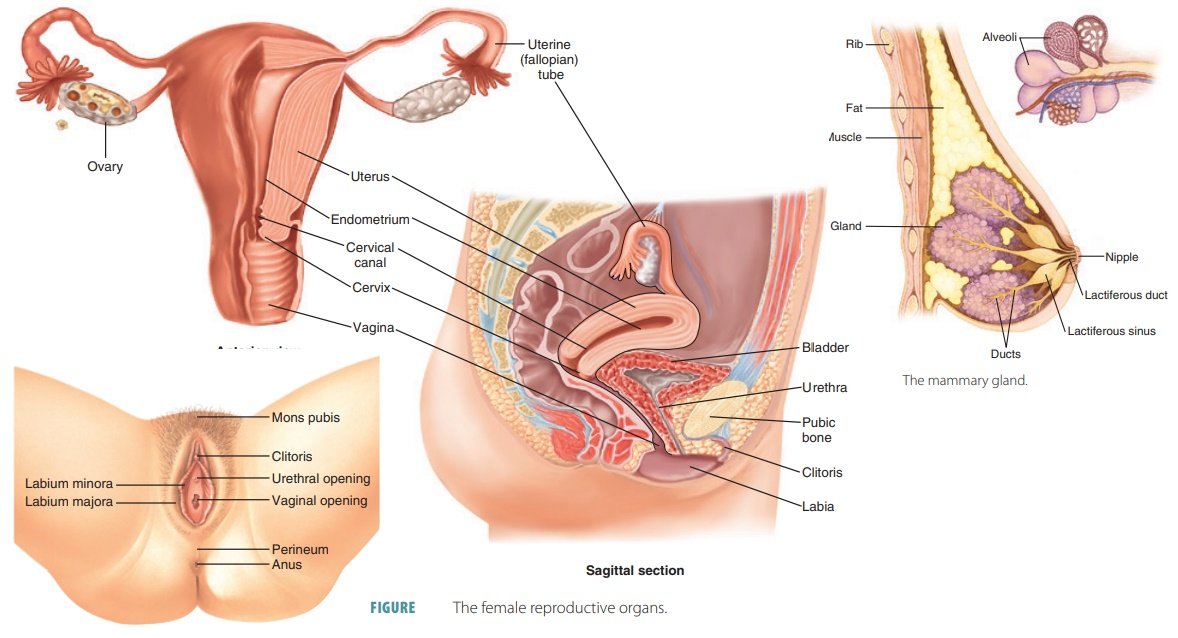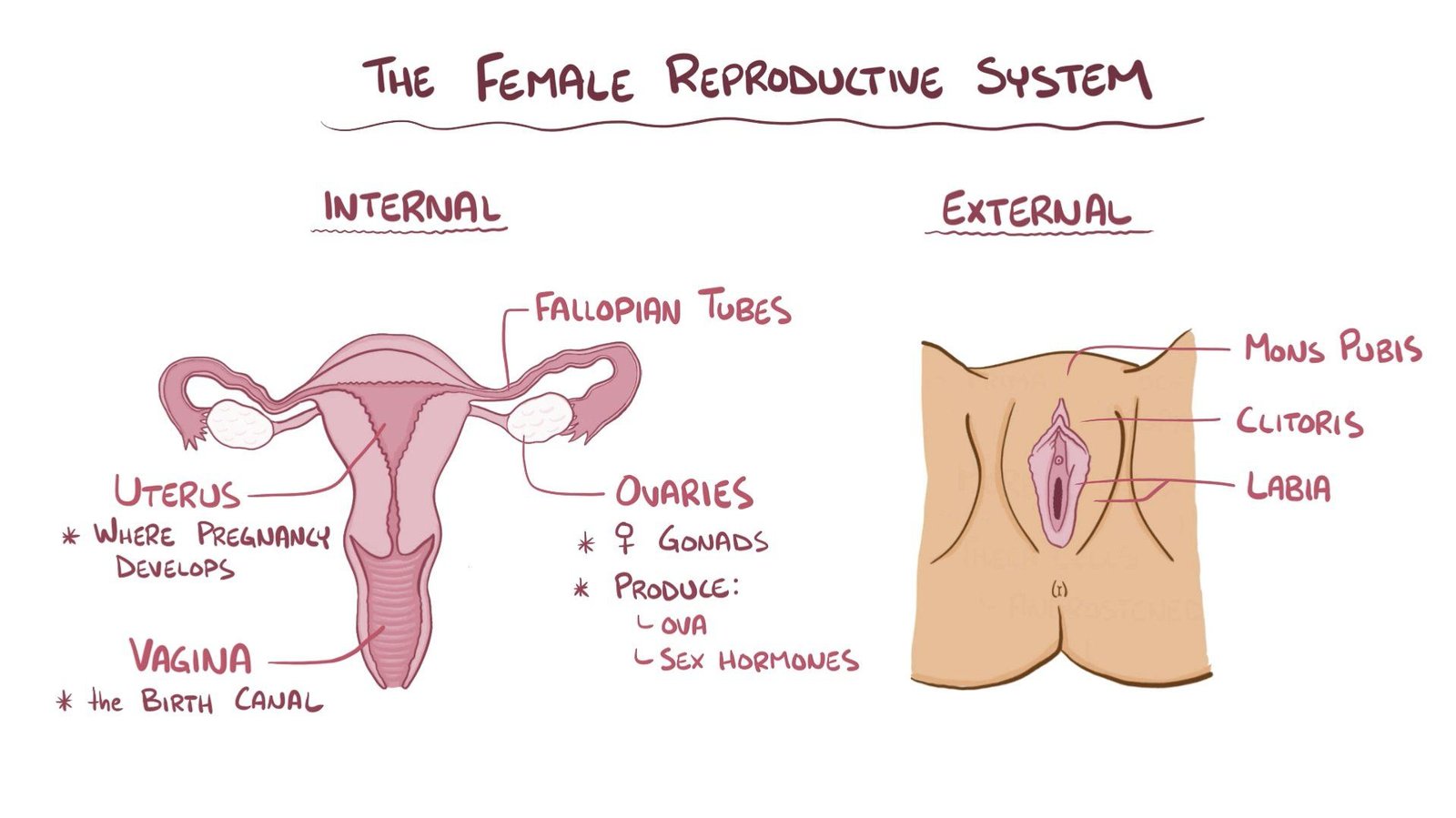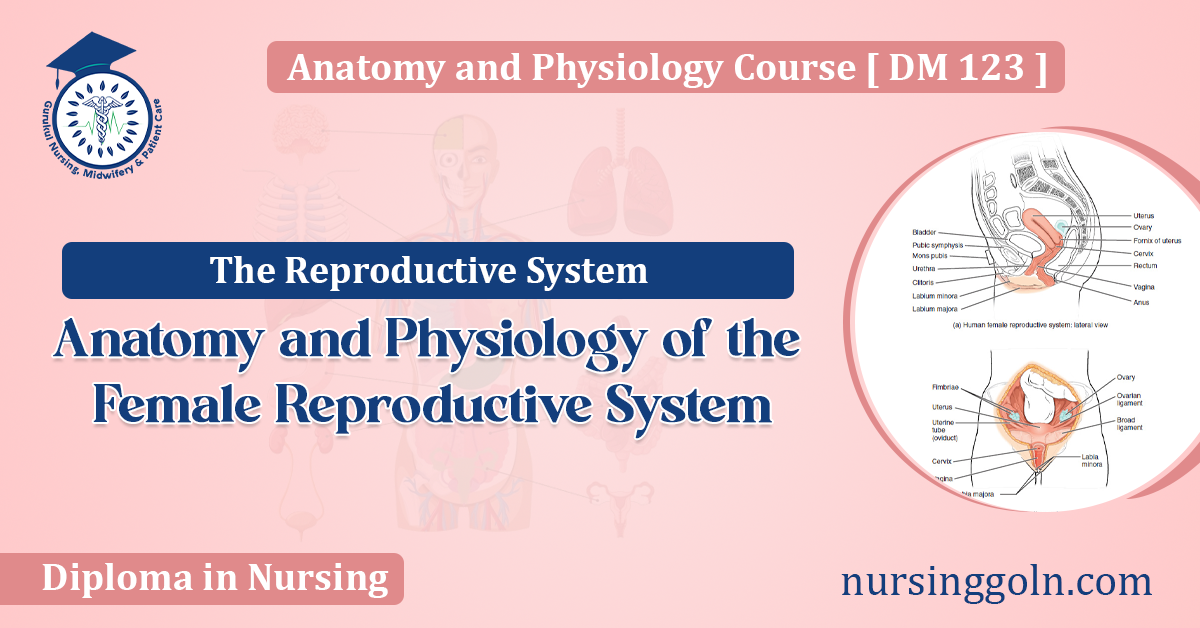Today our topic of discussion is ” Anatomy and Physiology of the Female Reproductive System “. The female reproductive system is an intricate and complex biological system that plays several vital roles in human reproduction and sexual function. This system is designed to carry out several functions, including the production of female sex hormones that maintain the reproductive cycle, the creation of female gametes (eggs), and providing an environment to nurture and protect a developing embryo.
Understanding the anatomy and physiology of the female reproductive system is crucial for a wide range of disciplines, from medical practice to educational purposes. In this article, we will delve into the various components of the female reproductive system, their structure, and their functions within the wider context of the reproductive process.
Anatomy and Physiology of the Female Reproductive System : The Reproductive System
Anatomy of the Female Reproductive System
The female reproductive system is composed of internal and external structures. The external structures are collectively known as the vulva, which includes the mons pubis, labia majora, labia minora, clitoris, and the openings of the urethra and vagina. The internal structures consist of the vagina, cervix, uterus, fallopian tubes, and ovaries.
External Structures
Mons Pubis: The mons pubis is a rounded mass of fatty tissue that covers the pubic bone. After puberty, it becomes covered with hair.
Labia Majora: The labia majora are two large, fleshy folds of tissue that extend from the mons pubis and run downward and posteriorly, encompassing the labia minora, clitoris, and vaginal and urethral openings.
Labia Minora: The labia minora are two smaller, thinner folds of tissue located within the labia majora. They protect the openings of the urethra and vagina.
Clitoris: The clitoris is a small, sensitive, erectile part of the female genitals at the anterior end of the vulva. It is the primary center for sexual pleasure in females.
Urethral and Vaginal Openings: Below the clitoris is the opening of the urethra, the tube through which urine exits the body. Below the urethral opening is the vaginal opening.
Internal Structures
Vagina: The vagina is a muscular and tubular part of the female genital tract, which extends from the cervix to the exterior of the body. It is the site of intercourse, the outlet for menstrual flow, and the passageway for childbirth.
Cervix: The cervix is the lower, narrow part of the uterus that forms a canal between the uterus and vagina.
Uterus: The uterus is a hollow, muscular, pear-shaped organ located posterior to the bladder. The uterus is responsible for nurturing the fertilized ovum that develops into the fetus and holding it till the baby is mature enough for birth.
Fallopian Tubes: These are two thin tubes that serve as pathways for the ova (eggs) to travel from the ovaries to the uterus. Fertilization of the egg by a sperm typically occurs in the fallopian tubes.
Ovaries: The ovaries are small, oval-shaped glands located on either side of the uterus. They produce eggs and hormones including estrogen and progesterone.

Physiology of the Female Reproductive System
The physiology of the female reproductive system is characterized by a series of cyclical changes known as the menstrual cycle. This cycle is typically around 28 days long, but can vary from woman to woman, and is regulated by various hormones that prepare the body for pregnancy.
The Menstrual Cycle
The menstrual cycle is divided into several phases:
Menstrual Phase: This phase begins on the first day of menstruation, where the lining of the uterus (endometrium) breaks down and is shed, resulting in bleeding.
Follicular Phase: During this phase, the hypothalamus signals the pituitary gland to release follicle-stimulating hormone (FSH). FSH stimulates the ovaries to produce around 5 to 20 tiny sacs called follicles. Each follicle contains an immature egg. Usually, only one follicle, the dominant one, will mature into an ovum, while the rest will deteriorate.
Ovulatory Phase: Rising levels of estrogen from the dominant follicle trigger a sharp increase in luteinizing hormone (LH) from the pituitary gland, leading to ovulation, the release of the mature egg from the surface of the ovary.
Luteal Phase: After the egg is released, the empty follicle transforms into a structure called the corpus luteum, which secretes progesterone and some estrogen. These hormones thicken the uterine lining, preparing it for possible implantation of a fertilized egg, which would result in pregnancy. If fertilization does not occur, the corpus luteum degenerates, leading to a drop in progesterone and estrogen levels, eventually resulting in menstruation, and the cycle begins anew.
Hormonal Regulation
The hormonal control of the menstrual cycle involves the hypothalamus, the pituitary gland, and the ovaries. The hypothalamus secretes gonadotropin-releasing hormone (GnRH), which stimulates the pituitary to release FSH and LH. These hormones act on the ovaries to promote follicle development and ovulation.
Fertilization and Pregnancy
If an egg is fertilized by a sperm, it may implant itself into the thickened uterine lining, where it begins the process of embryogenesis and eventually develops into a fetus. The placenta forms and produces human chorionic gonadotropin (hCG), which maintains the corpus luteum and its production of progesterone and estrogen to sustain the pregnancy.

Pathophysiology of the Female Reproductive System
Various disorders can affect the female reproductive system, ranging from menstrual irregularities to more severe conditions such as polycystic ovary syndrome (PCOS), endometriosis, and gynecologic cancers. Understanding the pathophysiology of these conditions is essential for diagnosis and treatment.

Conclusion
The female reproductive system is a highly dynamic and complex structure that plays a crucial role in reproduction. Its anatomy and physiology are finely tuned to carry out the processes of menstruation, ovulation, fertilization, and pregnancy. The understanding of this system is not only vital for medical professionals but also important for individuals to manage their reproductive health. Advances in medicine continue to provide greater insights into the female reproductive system, offering better management and treatment options for reproductive health issues.
Read more:
